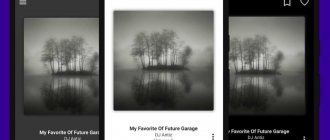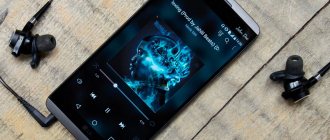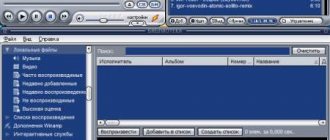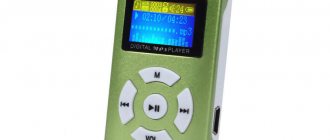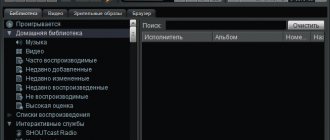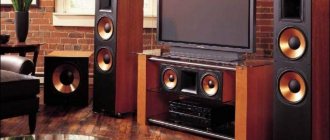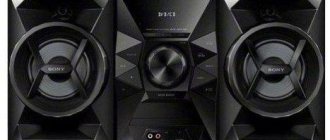CHARACTERISTICS
- DAC: AK4495SEQ
- Amplifiers: OPA2134/OP275 + LME49720 + BUF634
- Format support: DSF, DFF, ISO, WAV, DTS, FLAC, APE, MP3, CUE
- Display: color
- Operating time on one charge: 8-12 hours (screen off)
- Charging time: 3 hours (current 5 volts 1 ampere)
- Battery: 3000mAh
- Input: MicroUSB
- Outputs: 3.5 mm headphone, line, coaxial
- Memory card support: MicroSD (up to 128 GB)
- USB DAC mode: asynchronous, up to 48 kHz/16 bit
- Dimensions (L x W x H): Dimensions: 95 x 56 x 22 mm
- Weight: 173 g.
UNPACKING AND EQUIPMENT
The player arrived without any packaging, just wrapped in bubble wrap. A quick glance at the configuration generally allows you to fill the nearest trash can with it. The microUSB cable is too hard and extremely short. Chinese charging for the outdated 5 volt 1 ampere is practically useless, since there are already plenty of similar ones at home, and right away with a suitable plug. More or less, you can thank for the 16 GB class 10 memory card and a good card reader. On the other hand, 16 gigabytes for Hi-Res music is nothing at all.
DESIGN/ERGONOMICS
As a makeshift device, Zishan DSD will not be able to please you with girly glamor. This is a strict men's player with a metal body and rattling copper buttons. And although the weight is only 170 grams, the sharpened sharp angle will more than replace you as a weapon of self-defense in the dark alleys of the city. The dimensions are just right, the player easily fits into any pocket and is not inclined to pull your pants off even in the hottest time of the year. On his back is the proud inscription “Zishan DSD”. And from the face - a large color display with excellent brightness and acceptable viewing angles. Below the screen are the same 5 copper buttons. By the way, according to the comment in the order, the seller can send a device with plastic buttons if this is critical for you. On the bottom of the Zishan DSD there is a MicroUSB port for charging and connecting with a digital signal source. Next to it is an indicator LED. To the right you can find 3.5 mm. coaxial output, for those who plan to connect the player with a high-quality external amplifier. On top, everything is much more prosaic: a slot for memory cards up to 128 gigabytes, a reset button, a volume control, a headphone output and a separate line output. The sound from the linear is not adjustable with a knob and differs from the main signal in the absence of an output amplifier in the path. Everything on the side faces is empty. The first time after purchasing Zishan DSD, I was completely confused about the purpose of the buttons. However, a day later I was already able to easily navigate without literally taking the player out of my pocket. Everything turned out to be extremely simple. On the main playback screen, you can go to quick settings by pressing the up button, to the file list by pressing down, or to the main menu by holding your finger on the left button.
Setting up and using Album Player
In the same folder you can find a text file describing the player settings from the author himself...
All you have to do is click on...
...and select an album or an individual song on your computer (optical disk, flash drive...).
The artist or album image will be displayed if it is in the same folder as the track.
Double clicking on a line will start playing a new song.
If you hold down the Ctrl key on the keyboard and click on several songs, they will be played in turn.
By clicking anywhere on the player with the RIGHT mouse button you will get a menu...
...in which you can save a list of songs, create a new one, enable automatic playback when you start the player (Autoplay), etc.
I hope that for true connoisseurs of pure, immaculate sound, this audio player will be a godsend.
Quality music for your sensitive ears. Now you know about the best free audio player for Windows.
To new useful computer programs and interesting applications for Android.
INTERFACE
The main screen contains all the necessary information: battery status, title and progress of the song, characteristics of the stream being played and album cover. In the quick settings, you can replace the cover display with a much more audiophile display of the spectrum; there is also a choice of playback mode and a 10-band equalizer switch. When you press the middle button, the player asks what to do with the current file. There are only two options: reproduce and delete. The player can play an incredibly large number of formats, including real DSD256, that is, without converting to PCM, like with any ponies players. I see only two drawbacks here. The first is that it is impossible to delete the entire folder, and the second is that on the current firmware the player cannot scale covers and sometimes it doesn’t even look funny. CUE files are also supported, and quite correctly, we go into each CUE file as if it were a folder.
Foobar2000 (Free)
Foobar2000 is one of the most popular music players for Windows, almost world famous. The name isn't the best and the interface is a bit dated, but the app is fast, customizable and, perhaps most importantly, free.
Foobar supports FLAC out of the box, but not DSD. To get support, you need to add the optional DSDIFF module, which you can .
SETTINGS
The main menu has only 6 items, three of which are “now playing”, “file manager” and equalizer modes. Next comes the DAC settings, where we select the filtering mode, which allows us to give different shades to the final analog signal, from “clean” to “dirty” sound. To use Zishan DSD as a sound card, a USB DAC switch is provided in the settings, and the illogical term “Turbo” refers to switching amplification modes. When turned off, it is quite comfortable to listen to music at 50% volume, but if you turn on the turbo mode, you need to be on guard, since in this case the acceptable volume begins with only a couple of notches. Therefore, if your headphones are not very tight, then an accidental and sharp turn of the volume knob can even negatively affect your hearing, because the device does not take up the power. The last setting generally seemed stupid to me, since the only thing it does is slow down the speed at which the player turns on. In the OFF state, the player turns on and off almost instantly, but probably for some it will be too fast and the developer has provided a kind of brake pedal. In the system settings, you can only select “in-car mode,” which controls turning the player on and off depending on engine operation. There are only three languages in the player, and two of them are Chinese, so in any case you will have to use it in English. Well, for a snack, a full-fledged Tetris! This is not only about listening to music, but also about high-quality talk.
Download Album Player
| Purpose: | One of the best free audio players for Windows |
| The name of the program: | Album Player |
| Manufacturer (author): | Igor Antonov |
| Status: | For free |
| Category: | Audio |
| Installer (archive) size: | 6 MB |
| OS support: | Windows XP,7,8,10 |
| Interface language: | English Russian… |
| Safety: | No viruses |
| Similar programs: | AIMPMcool |
| Link to installer/website: |
…
…
Like the player itself, its official website is striking in its simplicity. The author has no prospect of a career as an advertising agent, that’s for sure.
All we will take from the manufacturer’s page are links to download the player. This is how they look on the author’s website...
Of course, now there are much newer versions of the player (screenshot from 2013). Moreover, Album Player Mini variants have appeared. There is also an option for the Linux operating system.
Downloaded, unzipped and received a folder with the program. Don't be alarmed, I warned you that Album Player is a terrible audio player in every way.
To launch the program, you need to find and click on the following shortcut in the downloaded folder (the author renamed it in the current versions, but the image remains the same)…
This shortcut can be easily moved to the desktop using the context menu (Send to - Desktop). And if you want to insert an item with this player into the context menu, then the Fast Explorer program is in your hands (it has not yet been described on this site).
SOUND
I was asked a lot of questions about the sound of Zishan DSD in the context of comparison with the first generation FiiO X5. Here I want to emphasize that out of the box the sound of these players is very similar: the same moderately deep, but fast and biting bass, crystal clear mids and bright detailed highs.
The detailing of the mid frequencies and the separation of stage plans make you shake a virtual hand with the developers of this miracle. The presentation is a little aggressive and quite emotional. Comparing Zishan DSD with FiiO X5, it was very difficult for me to identify the leader, but the situation was resolved unexpectedly and fatally.
In one of the comments when unpacking the device, they hinted at the presence of a “crib” on the Zishan DSD board. By “crib” we mean the ability to easily replace the amplifier, without the use of a soldering iron or any technical knowledge. This is where a surprise awaited me! It was logical to assume that the main amplifier of the player was installed in the crib. However, having taken a closer look at the diagram, I saw that we were being offered to change the amplifier responsible for the low-pass filter (abbreviated LPF). The low-pass filter, contrary to banal logic, cuts off not low, but high frequencies, which is why it mainly affects the middle and high-frequency ranges.
Rummaging around in the desk, I discovered the LM6172
and immediately began installing it. In order to disassemble the device, you must first unscrew the screw on the volume knob, and then the other 4 screws. In general, the process of changing the amplifier, although it requires complete disassembly of the device, in reality it takes about five minutes, if you also count the reassembly.
So, the low-pass amplifier was installed, and the complete LME49720
was put on the table.
It’s worth noting here that in terms of its “musicality” the LME49720
is no different and loses to
the LM6172
. Sinking into a chair, I turn on the player and freeze in a blissful smile. Surprisingly, I have a completely different sound in my ears, and even more mature: the bass has lost the tightness characteristic of the FiiO X5, the highs have acquired additional brightness, and the mid frequencies seem to have added warmth. By God, I got the impression that I was listening to music directly from a studio analog rack - the sound is simply beautiful! As proof, for the first time in a long time I began to listen to literally everything I found on my hard drive and memory cards...
Review of Zishan DSD - a player for a seasoned audiophile
Zishan DSD Hi-Res audio player has been in my head for a relatively long time. However, neither the appearance nor the price were in any way conducive to purchase. Time passed, and the price tag on the device literally froze. Well, it would seem - spit and grind. But the results of measurements and the top characteristics of the components used still slowly disturbed my heart and, looking ahead, I will say - not in vain.
CHARACTERISTICS
- DAC: AK4495SEQ
- Amplifiers: OPA2134/OP275 + LME49720 + BUF634
- Format support: DSF, DFF, ISO, WAV, DTS, FLAC, APE, MP3, CUE
- Display: color
- Operating time on one charge: 8-12 hours (screen off)
- Charging time: 2 hours (current 5 volts 1 ampere)
- Battery: 3000mAh
- Input: MicroUSB
- Outputs: 3.5 mm headphone, line, coaxial
- Memory card support: MicroSD (up to 128 GB)
- USB DAC mode: asynchronous, up to 48 kHz/16 bit
- Dimensions (L x W x H): Dimensions: 95 x 56 x 22 mm
- Weight: 173 g.
FIND OUT THE CURRENT PRICE FOR ZISHAN DSD
VIDEO VERSION OF REVIEW
UNPACKING AND EQUIPMENT
The player arrived without any packaging, just wrapped in bubble wrap. A quick glance at the configuration generally allows you to fill the nearest trash can with it.
The microUSB cable is too hard and extremely short.
Chinese charging for the outdated 5 volt 1 ampere is practically useless, since there are already plenty of similar ones at home, and right away with a suitable plug.
More or less, you can thank for the 16 GB class 10 memory card and a good card reader.
On the other hand, 16 gigabytes for Hi-Res music is nothing at all.
DESIGN/ERGONOMICS
As a makeshift device, Zishan DSD will not be able to please you with girly glamor. This is a strict men's player with a metal body and rattling copper buttons.
And although the weight is only 170 grams, the sharpened sharp angle will more than replace you as a weapon of self-defense in the dark alleys of the city.
The dimensions are just right, the player easily fits into any pocket and is not inclined to pull your pants off even in the hottest time of the year.
On his back is the proud inscription “Zishan DSD”.
And from the face - a large color display with excellent brightness and acceptable viewing angles.
Below the screen are the same 5 copper buttons. By the way, according to the comment in the order, the seller can send a device with plastic buttons if this is critical for you.
On the bottom of the Zishan DSD there is a MicroUSB port for charging and connecting with a digital signal source.
Next to it is an indicator LED.
To the right you can find 3.5 mm. coaxial output, for those who plan to connect the player with a high-quality external amplifier.
On top, everything is much more prosaic: a slot for memory cards up to 128 gigabytes, a reset button, a volume control, a headphone output and a separate line output. The sound from the linear is not adjustable with a knob and differs from the main signal in the absence of an output amplifier in the path.
Everything on the side faces is empty.
The first time after purchasing Zishan DSD, I was completely confused about the purpose of the buttons. However, a day later I was already able to easily navigate without literally taking the player out of my pocket.
Everything turned out to be extremely simple. On the main playback screen, you can go to quick settings by pressing the up button, to the file list by pressing down, or to the main menu by holding your finger on the left button.
INTERFACE
The main screen contains all the necessary information: battery status, title and progress of the song, characteristics of the stream being played and album cover.
In the quick settings, you can replace the cover display with a much more audiophile display of the spectrum; there is also a choice of playback mode and a 10-band equalizer switch.
When you press the middle button, the player asks what to do with the current file. There are only two options: reproduce and delete. The player can play an incredibly large number of formats, including real DSD256, that is, without converting to PCM, like with any ponies players.
I see only two drawbacks here. The first is that it is impossible to delete the entire folder, and the second is that on the current firmware the player cannot scale covers and sometimes it doesn’t even look funny.
CUE files are also supported, and quite correctly, we go into each CUE file as if it were a folder.
SETTINGS
The main menu has only 6 items, three of which are “now playing”, “file manager” and equalizer modes.
Next comes the DAC settings, where we select the filtering mode, which allows us to give different shades to the final analog signal, from “clean” to “dirty” sound. To use Zishan DSD as a sound card, a USB DAC switch is provided in the settings, and the illogical term “Turbo” refers to switching amplification modes. When turned off, it is quite comfortable to listen to music at 50% volume, but if you turn on the turbo mode, you need to be on guard, since in this case the acceptable volume begins with only a couple of notches. Therefore, if your headphones are not very tight, then an accidental and sharp turn of the volume knob can even negatively affect your hearing, because the device does not take up the power. The last setting generally seemed stupid to me, since the only thing it does is slow down the speed at which the player turns on. In the OFF state, the player turns on and off almost instantly, but probably for some it will be too fast and the developer has provided a kind of brake pedal.
In the system settings, you can only select “in-car mode,” which controls turning the player on and off depending on engine operation. There are only three languages in the player, and two of them are Chinese, so in any case you will have to use it in English.
Well, for a snack, a full-fledged Tetris! This is not only about listening to music, but also about high-quality talk.
IRON
There is no point in talking much about hardware, since there is a complete block diagram and the results of specific measurements.
In fact, this, of course, will not tell you anything about exactly how the player sounds, so I will have to go into analogies and associations - there are simply no options.
SOUND
I was asked a lot of questions about the sound of Zishan DSD in the context of comparison with the first generation FiiO X5. Here I want to emphasize that out of the box the sound of these players is very similar: the same moderately deep, but fast and biting bass, crystal clear mids and bright detailed highs.
The detailing of the mid frequencies and the separation of stage plans make you shake a virtual hand with the developers of this miracle. The presentation is a little aggressive and quite emotional.
Comparing Zishan DSD with FiiO X5, it was very difficult for me to identify the leader, but the situation was resolved unexpectedly and fatally.
In one of the comments when unpacking the device, they hinted at the presence of a “crib” on the Zishan DSD board. By “crib” we mean the ability to easily replace the amplifier, without the use of a soldering iron or any technical knowledge. This is where a surprise awaited me!
It was logical to assume that the main amplifier of the player was installed in the crib. However, having taken a closer look at the diagram, I saw that we were being offered to change the amplifier responsible for the low-pass filter (abbreviated LPF). The low-pass filter, contrary to banal logic, cuts off not low, but high frequencies, which is why it mainly affects the middle and high-frequency ranges.
After rummaging around in the desk, I discovered the LM6172 , and immediately began installing it. In order to disassemble the device, you must first unscrew the screw on the volume knob, and then the other 4 screws. In general, the process of changing the amplifier, although it requires complete disassembly of the device, in reality it takes about five minutes, if you also count the reassembly.
So, the low-pass amplifier was installed, and the complete LME49720 was put away in the table. It’s worth noting here that in terms of its “musicality” the LME49720 is no different and loses to the LM6172 .
Sinking into a chair, I turn on the player and freeze in a blissful smile. Surprisingly, I have a completely different sound in my ears, and even more mature: the bass has lost the tightness characteristic of the FiiO X5, the highs have acquired additional brightness, and the mid frequencies seem to have added warmth. By God, I got the impression that I was listening to music directly from a studio analog rack - the sound is simply beautiful! As proof, for the first time in a long time I began to listen to literally everything I found on my hard drive and memory cards...
CONCLUSIONS
Without a doubt, in terms of price and sound, Zishan DSD is a complete success! Here you have support for a huge number of formats (without any conversion), the ability to easily replace the amplifier and, of course, full-fledged Tetris! Yes, and just look at the appearance of the device, sleek boys don’t go with such a device, it requires the grated male hand of an understanding audiophile. Highly recommend.
FIND OUT THE CURRENT PRICE FOR ZISHAN DSD
PS Firmware updates for Zishan DSD can be downloaded from here. The update scheme is simple: dump the contents of the archive into the root of the memory card and turn on the device. bin files from the memory card later .
CONCLUSIONS
Without a doubt, in terms of price-sound Zishan DSD
- this is a complete success!
Here you have support for a huge number of formats (without any conversion), the ability to easily replace the amplifier and, of course, full-fledged Tetris! Yes, and just look at the appearance of the device, sleek boys don’t go with such a device, it requires the grated male hand of an understanding audiophile. Highly recommend.
PS
Firmware updates for
Zishan DSD
can be downloaded
from here
.
The update scheme is simple: dump the contents of the archive into the root of the memory card and turn on the device. bin
files from the memory card later .



